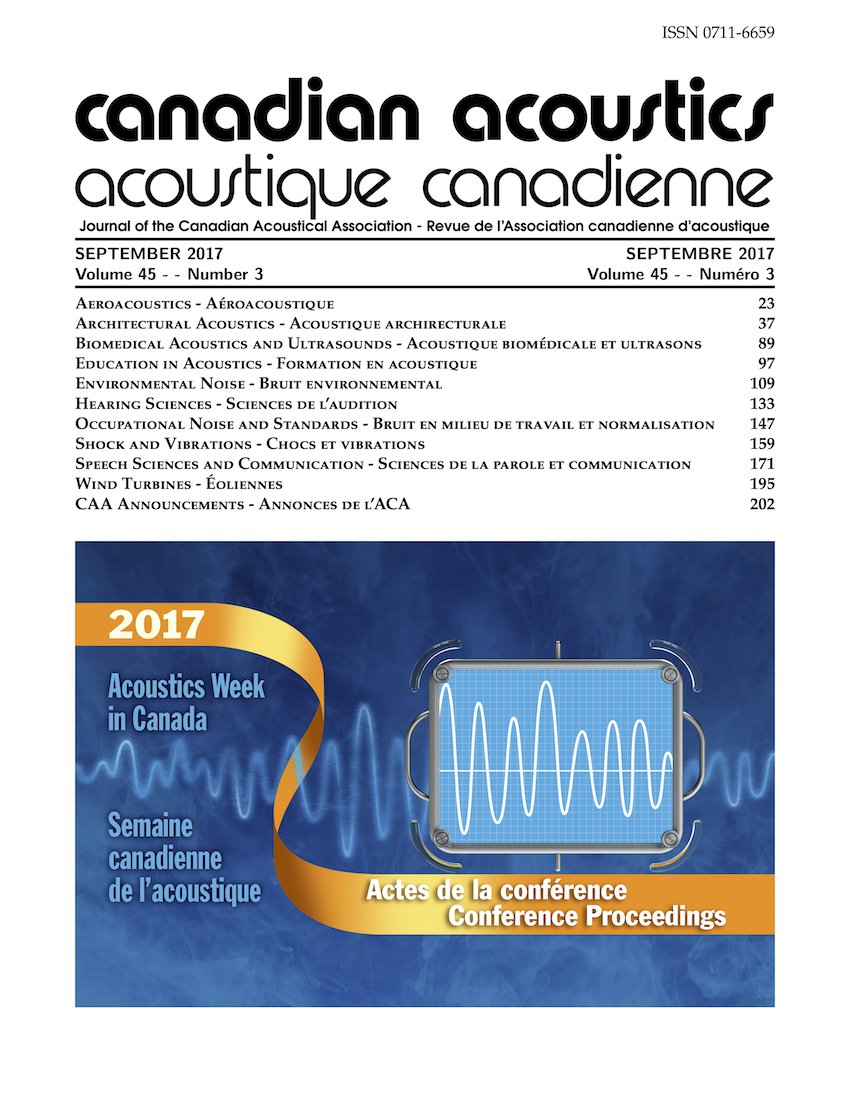(A)STC Testing With MLS: Old Dog. New Tricks.
Abstract
Within ASTM E336: Standard Test Method for Measurement of Airborne Sound Attenuation between Rooms in Buildings, it states that the signal to be used for the testing be such that "the input signal to the amplifiers shall be random noise containing an approximately continuous distribution of frequencies over each test band. White or pink electronic noise sources satisfy this condition". Another signal that also meets the condition is a maximum length sequence, or MLS. Typically the author has seen MLS used in room acoustics measurements, mostly in the determination of a spaces reverberation time (RT60). Considering the MLS signals' well-established usefullness in room acoustics and the fact that it meets the signal condition in ASTM E336 the author explores the possible benefits in using MLS while performing (A)STC testing in the field. The focus of the work will be in using the MLS signal to obtain the RT60 in both receiver and source rooms without having to move the speaker from room to room or do additional RT60 measurements using other sources of sound.Additional Files
Published
How to Cite
Issue
Section
License
Author Licensing Addendum
This Licensing Addendum ("Addendum") is entered into between the undersigned Author(s) and Canadian Acoustics journal published by the Canadian Acoustical Association (hereinafter referred to as the "Publisher"). The Author(s) and the Publisher agree as follows:
-
Retained Rights: The Author(s) retain(s) the following rights:
- The right to reproduce, distribute, and publicly display the Work on the Author's personal website or the website of the Author's institution.
- The right to use the Work in the Author's teaching activities and presentations.
- The right to include the Work in a compilation for the Author's personal use, not for sale.
-
Grant of License: The Author(s) grant(s) to the Publisher a worldwide exclusive license to publish, reproduce, distribute, and display the Work in Canadian Acoustics and any other formats and media deemed appropriate by the Publisher.
-
Attribution: The Publisher agrees to include proper attribution to the Author(s) in all publications and reproductions of the Work.
-
No Conflict: This Addendum is intended to be in harmony with, and not in conflict with, the terms and conditions of the original agreement entered into between the Author(s) and the Publisher.
-
Copyright Clause: Copyright on articles is held by the Author(s). The corresponding Author has the right to grant on behalf of all Authors and does grant on behalf of all Authors, a worldwide exclusive license to the Publisher and its licensees in perpetuity, in all forms, formats, and media (whether known now or created in the future), including but not limited to the rights to publish, reproduce, distribute, display, store, translate, create adaptations, reprints, include within collections, and create summaries, extracts, and/or abstracts of the Contribution.


